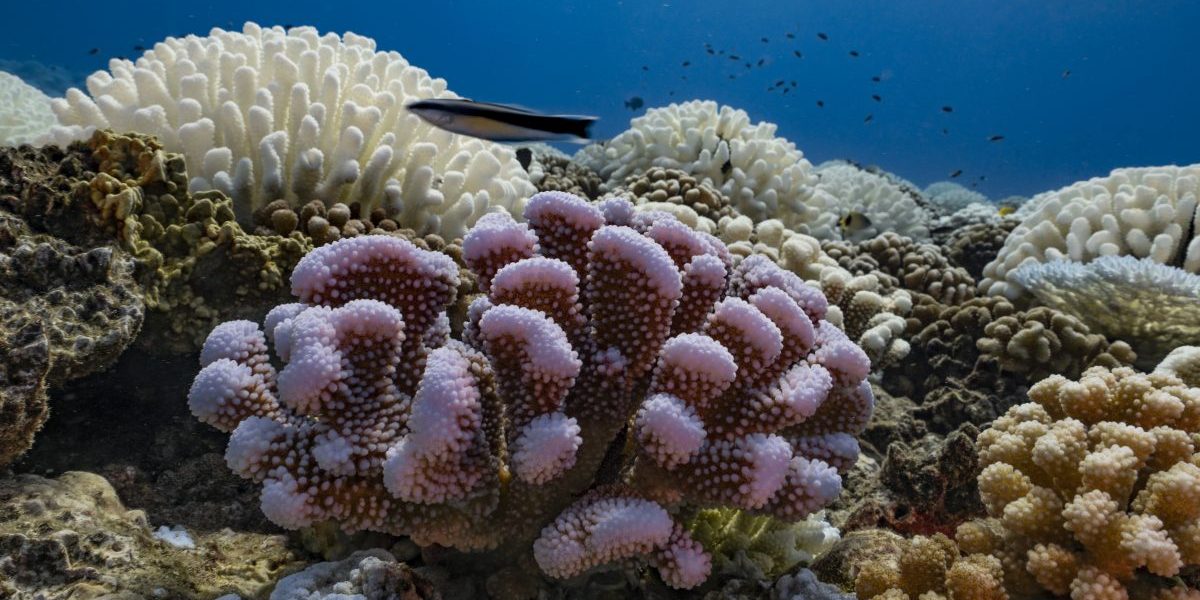Recommendations
We propose the advancement of ocean accounts in African ocean economies to balance ocean resource-use with ocean resource sustainability and inclusivity.
This advancement is proposed through the development of a roadmap for incremental expansion of ocean accounts, including in: a) national processes for sharing of relevant information across sectors; b) international processes for transboundary data sharing; and c) the identification of avenues for requesting information from international datasets.
This advancement would benefit from the implementation of pilot studies in a number of African coastal regions or countries to assess the applicability of oceans accounts in the governance of African ocean economies. Processes within these pilot studies include:
- the holistic reviews of ocean-related information (across environmental, social and economic domains) held by different government agencies, research institutes, and international institutions to determine both the extent of available data and data deficiencies for the implementation of ocean accounts frameworks;
- the organisation of relevant information into pilot accounts consistent with the Ocean Accounts Framework identified by the Global Ocean Accounts Partnership, and topics and questions that are relevant to immediate policy cycle priorities; and
- the development of human capacity in oceans accounts, and the role of natural capital accounting in ocean governance processes, through academic integration, exchange and mobility.
Executive summary
Ocean accounts organise ocean data (social, environmental and economic) into a common framework, using the same structures as found in existing national accounts of national statistical offices or finance ministries. The integration of these data mean ocean accounts go beyond the gross domestic product (GDP) headline indicator of national accounts, measuring ocean contribution to society and progress in line with the Sustainable Development Goals.
Ocean accounts provide a common information infrastructure for ocean policy, marine spatial planning, environmental management and international reporting. Pilot projects around the world suggest that they can be compiled incrementally using existing data, with modest investment in cross-government collaborations and international sharing of lessons learned.
African coastal countries are increasingly turning to their oceans to foster economic growth and resource security. Acceleration of ocean-resource uses requires careful monitoring – beyond the scope of existing national accounting systems – to ensure the sustainability and inclusivity of ocean economies.
Introduction
Human populations have long benefited from ocean systems that cover some 70% of the Earth’s surface, and recent global estimates of the ocean contribution to the world economy range from $1.5 trillion to $3 trillion a year.1Global Oceans Commission, The Future of Our Ocean – Next steps and priorities (Oxford: GOC, 2016), 33; Organisation for Economic Co-operation and Development, The Ocean Economy in 2030 (Paris: OECD, 2016), 23.A growing global dependence on the ocean is increasing pressures on ocean environments and resources. More diversified ocean resource-use is becoming increasingly important to Africa for the food, energy and economic security needs of its expanding populations. Thirty-eight of Africa’s 54 nations are coastal, about 13 million square kilometres of ocean space fall under African jurisdiction and the continent has a coastline of some 48,000 kilometres. The importance of oceans to Africa is underlined by the AU’s Agenda 2063 and the 2050 African Integrated Maritime Strategy (AIMS), and emerging national and regional policies that pursue development of ocean-based sectors. There is, however, a lack of standardised mechanisms to approach, account for, and decide on balancing diversified use of ocean space.2UN Economic Commission for Africa, Africa’s Blue Economy: A policy handbook (Addis Ababa: ECA, 2016), 1-93.
Functional ocean ecosystems are assets that contribute to the natural capital flows that generate the considerable basket of both market and non-market goods and service benefits. Conversely, abiotic services contribute to natural capital flows without a dependence on ecosystem function, and abiotic resource use can both impact system function and the delivery of ecosystem services and may compete for ocean space with other ecosystem service sectors, resulting in inter-sectoral conflict. These ecosystem and abiotic services underpin, along with the invested built and human capital, ocean economy value chains.
Building on the work of the Millennium Ecosystem Assessment, the Common International Classification for Ecosystem Services identifies three broad categories of final ecosystem services that deliver natural capital flows: provisioning (eg, food), regulation and maintenance (eg, flood protection), and cultural (eg, spiritual relationships with nature).3Roy Haines-Young and Marion Potschin, ‘Common International Classification of Ecosystem Services (CICES) V5.1 and Guidance on the Application of the Revised Structure’ (Fabis Consulting Ltd., 2018), www.cices.eu.Of these, only provisioning service flows are typically valued by markets and even then, flow values do not often reflect the status of the underlying natural capital assets, including their replacement value. Regulation and maintenance services are often taken for granted and are often only valued once compromised. Notwithstanding major progress over the last 10 years about how ecosystem services can be adequately defined and measured, ambiguities remain. This is partly because system boundaries are often vaguely defined, particularly in oceans, where ecological functions such as connectivity and flows across national boundaries are poorly quantified.
A need for informed ocean governance and policy development
New technologies that allow for the recent expansion in ocean economic activities are also driving changes in ocean research and monitoring, and in the creation of large and complex data sets that require novel approaches to analyses and integration. As such, there is a need for frameworks and models that can support integration and interactions across environment, economic and social domains, such as those framed under the Sustainable Development Goals (SDGs)4David Obura, ‘Getting to 2030 – scaling effort to ambition through a narrative model of the SDGs,’ Marine Policy 117, (2020)., in order to support evidence-based decision-making for ocean policy development. Such frameworks and models need to include the manner in which ecosystem services are utilised through economic production to provide for the welfare and prosperity of people.
Increasing and diversifying ocean resource-uses results in both increased production and consumption activities that have the potential for spatial conflicts between sectors, and the need to balance resource-use with resource flow and natural capital asset flow protection. Human impacts to the ocean can be broadly categorised into five major impact areas, namely: unsustainable extraction, pollution, habitat destruction, alien species translocation, and hydrocarbon energy-use impacts (eg, climate change or ocean acidification). Production impacts are relatively easy to regulate at points of production through instruments that range across the mitigation hierarchy, including avoidance, reduction, offsetting and regeneration. Impacts on consumption activities require changes in consumer behaviour that are more difficult to implement.
Marine Spatial Planning (MSP)5Charles Ehler and Fanny Douvere, ‘Marine Spatial Planning: a step-by-step approach toward ecosystem-based management’, Intergovernmental Oceanographic Commission and Man and the Biosphere Programme. IOC Manual and Guides No. 53, ICAM
Dossier No. 6. Paris: UNESCO, 2009.is one of a number of spatial management tools promoted in the ocean governance realm. MSP aims to both rationalise and optimise the human use of ocean space, and balance ocean resource-use with resource sustainability and environmental protection in order to achieve social and economic objectives in transparent and accountable manners. Spatial ocean governance, however, requires tradeoffs between competing resource users so as to balance protection with beneficial use, while also mitigating conflict and ensuring inclusivity, access and equity, sustainability and accountability.6Anthony Turton, et al. “Towards a Model for Ecosystem Governance: An Integrated Water Resource Management Example” in Governance as a Trialogue: Government-Society-Science in Transition, in Water Resources Development and Management
Series, ed. Anthony Turton et al. (Berlin Heidelberg: Springer-Verlag, 2007), 1-27.Core to the success of MSP and other spatial management tradeoff decisions are assessments of relative values of different ocean-based activities and associated metrics.
The performance of national economies in most countries is assessed through the System of National Accounts (SNA). These are consistent and integrated macroeconomic statistics which are collected and organised using internationally agreed concepts, definitions, classifications and accounting rules.7European Commission, International Monetary Fund, Organisation for Economic Co-operation and Development, UN, World Bank
Group, ‘SNA, System of National Accounts’, (New York: UN, 2008), 1-663.In the past, values of ocean economies have been largely estimated in terms of the gross-value-add of ocean sectors that contribute to a country’s gross domestic product (GDP) through a series of ocean satellite accounts across individual sectors. These generally require the identification of industry sectors (usually through ISIC (International Standard Industrial Classification of All Economic Activities classifications8United Nations Statistics Division, International Standard Industrial Classification of All Economic Activities Revision 4, (New York: UNSD, 2008), 1-291.) and some manner of disaggregation of the ocean contribution within each sector.9Charles Colgan, “The Blue Economy Theory and Strategy” in The Blue Economy Handbook of the Indian Ocean Region, eds. Vishva Attri and Narnia Bohler-Muller (Pretoria: Africa Institute of South Africa, 2018), 38-63.Value estimations have often differed markedly by countries because they select different industry sectors, geographic ranges, or different activities to include in the ocean contribution estimates. Critically, GDP metrics provide no information on the status of ecosystems that underpin ocean ecosystem services, nor the sustainability of natural capital flows. They also don’t address aspects of equity or inclusivity of benefit- or cost-sharing, or the number of jobs or livelihoods supported. Furthermore, broad non-market benefits are seldom directly quantifiable in monetarised or even physical metrics, thus their value and state is disregarded in national accounts.
Recognising such limitations, the System of Environmental Economic Accounting: Central Framework (SEEA:CF)10UN, European Commission, Food and Agriculture Organization of the UN, Organisation for Economic Co-operation and Development and World Bank Group, System of Environmental-Economic Accounting 2012 – Central Framework, (New York: UN, 2014), 1-346.was developed to account for relationships between the environment and the economy by integrating biophysical and economic data. The SEEA:CF enables national accounting systems to incorporate the physical stocks of natural capital inputs in a region as assets, and their supply and use in an economy, as well as outputs that impact the environment and the associated costs of mitigation of such impacts. The SEEA: Experimental Ecosystem Accounting (SEEA:EEA) framework11UN, European Commission, Food and Agriculture Organization of the UN, Organisation for Economic Co-operation and Development and World Bank Group, System of Environmental- Economic Accounting 2012-Experimental Ecosystem Accounting, (New York: UN, 2014), 1-117.(currently undergoing review) extends these aspects in a spatial context by considering the integration of ecosystem assets that provide final ecosystem services to people. Ecosystem condition and extent, and the market and non-market natural capital flows to people, are assessed. However, current models often don’t fully align the supply of natural capital with the outputs of sectorspecific produced goods and services as recorded in the ocean satellite accounts.
Ocean Accounts as a novel tool for ocean data integration
The Ocean Accounts Framework, developed by the Global Oceans Accounts Partnership12See: The Global Oceans Accounts Partnership: www.oceanaccounts.org., adapts the currently accepted international statistical standards to provide a holistic standards framework to account for oceans in a consistent and comparable manner.13Global Ocean Accounts Partnership, ‘Technical Guidance on Ocean Accounting for Sustainable Development’, https://www.oceanaccounts.org/technical-guidance-on-ocean-accounting-2.The framework identifies ocean contribution to the SNA (measured as ocean satellite accounts), the SEEA:CF and SEEA:EEA. It also provides novel guidelines on accounting for: a) how ocean space is managed and governed, including regulatory instruments and their efficacy, b) anthropogenic and natural risks arising from changing ocean environments, and c) social circumstances including poverty, social inclusion and well-being. Importantly, ocean-related growth, ocean-related welfare across different social groups, and the status of ocean environmental assets are considered within the framework. Both quantitative (physical and monetarised) and qualitative metrics are included in the framework. Ocean accounts measure across environmental, social and economic (and both market and nonmarket aspects) at regular accounting periods, so that the model framework can provide a far more holistic understanding of the contribution of oceans to societal well-being than current GDP metrics. Importantly, the integrated framework is compartmentalised so that individual accounts can be assessed discretely.
Through standardised and consistent compilation, ocean accounts provide the following advantages for the development of knowledge bases for informed ocean governance and policy cycle processes:
- Accounts boost the power of data through their consistency and structure, assimilating large volumes of multidisciplinary data across accounting periods so that spatial and temporal integration of the environment, social fabric and economy may be integrated.
- Accounts provide integrated information that decision-makers can readily understand, for example, as dashboards, scenarios, indicators, or spatial plans that span master, spatial, infrastructure, and scenario planning processes.
- Accounts provide indicators for inventories that strengthen national statistical systems and can identify the attainment of commitments, such as of the UN Agenda 2030 SDGs.
- Accounts provide regular measures of ocean access and inclusiveness, and to whom benefits or costs of ocean economies accrue.
- Accounts provide ongoing review of policy outcomes and effectiveness and are therefore of considerable value in adaptive management processes within policy cycles.
Importantly, ocean accounts offer the integration of large and novel datasets arising from multiple disciplines through evolving ocean science technologies, to provide evidencebased decision-making for ocean resource-use challenges within changing ocean environments.
Conclusion
For far too long, ocean resource-use utilities have been estimated through monetarised contribution to national economies, ignoring aspects of natural capital sustainability, access and inclusivity, and non-market and societal values (including non-use values), that may vary greatly with value systems. Ocean accounts provide a standardised and consistent framework for the integration of environmental, social and economic data, reflecting global priorities enshrined in the SDGs that we propose provides a more holistic measure of the contribution of the oceans to human welfare than that which is currently estimated in national accounts.
Acknowledgement
SAIIA gratefully acknowledges the support of the Swedish International Development Cooperation Agency (SIDA) for this publication.







